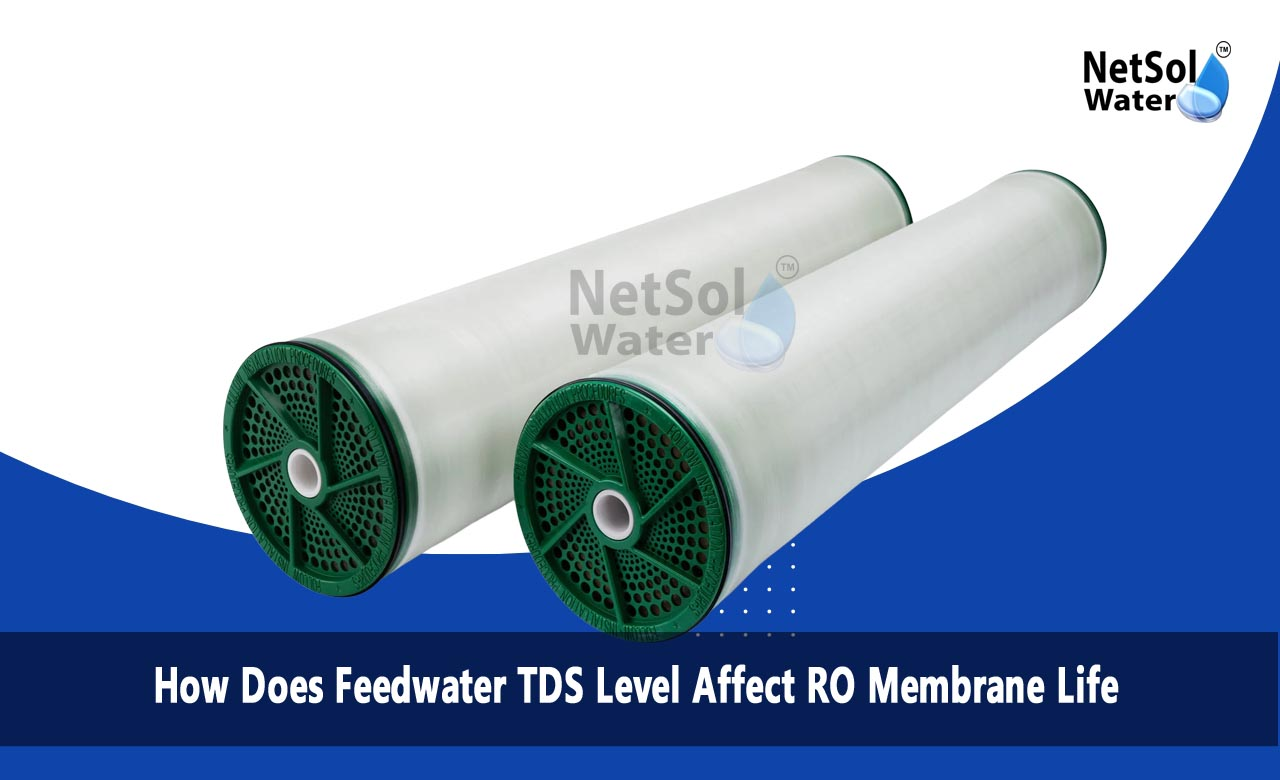How Does Feedwater TDS Level Affect RO Membrane Life?
One key factor that shapes performance and life span of RO membrane lies in the total dissolved solids level in feedwater. When feedwater carries high dissolved solids the membrane must work harder and faces more strain. Low dissolved solids ease the load and extend time between service events.
Understanding how feedwater TDS level affects RO membrane life helps plant operators plan for steady output and lean maintenance. High TDS can slow production and cause more wear on seals and layers inside the module. It can drive up energy use and raise the need for cleaning. On the other hand low TDS reduces the chances of scale and fouling. It lets the system run closer to its design goals for longer periods.
Role of TDS in Reverse Osmosis Performance
High levels of dissolved solids in feedwater make the system work under more pressure and with lower output. This effect can harm membrane life and raise cost.Let us have a look at some key aspects
Osmotic Pressure and Flux
High TDS forces the system to pump at greater pressure to push water through the membrane. The extra load can stress the membrane layers and the pump seals. This stress can lower the expected life span of the module.
Recovery Rate and Productivity
When the dissolved solids climb the daily water yield drops. Operators may push the system to meet the target volume. That extra strain can weaken the membrane pack and cut its service span.
Read: Commercial RO Plant Manufacturer in Noida
Impact on Membrane Fouling
Fouling can reduce flow rate and force more frequent cleaning. Managing TDS can help limit fouling and extend membrane life.Let us have a look at some fouling types
Inorganic Fouling
Hardness ions reach high levels when TDS runs up. These ions can form scale on the membrane surface. The scale can block pores and slow the flow. This pattern leads to more wash cycles and more wear on the module.
Organic Fouling
Organic matter can stick to the membrane when dissolved solids rise. This matter can bind with minerals to make a slimy layer. That layer can cut the flow rate and require deep cleaning steps.
Effect on Scaling and Cleaning Frequency
Scale build up can harm membrane pores and raise downtime needs. Proper TDS control lets you delay scale and cut cleaning cycles.Let us have a look at some scale control aspects
Scale Nucleation and Growth
High TDS feeds more calcium and magnesium to the membrane. These minerals can join and form hard crust on key parts of the module. That crust raises the need for heavy cleaning and can scar the membrane surface.
Cleaning Intensity and Downtime
When scale grows fast the plant must shut down more often for cleaning. Those shutdowns reduce output and add to the total cost of ownership.
Influence on Operating Cost and Membrane Life
The level of dissolved solids in feedwater links directly to pump load and part wear. By tracking TDS you can plan service visits and cut power bills.Let us have a look at some cost drivers
Energy Consumption
High TDS feedwater makes pumps draw more power to reach target pressure. More power use adds to electric bills and can drive up the cost per gallon of treated water.
Membrane Replacement Rate
When membranes face high dissolved solids they lose capacity faster. Operators must swap out modules more often. This cycle raises the overall cost of running the system.
Conclusion
Understanding how feedwater TDS level affect RO membrane life helps you get more value from each module. Netsol Water leads the field in manufacturing systems that match your feedwater profile and extend service life. We guide you in setting TDS limits and in choosing the right pretreatment steps. To learn more or to request a consultation on how feedwater TDS level affects your RO membrane life contact Netsol Water today.
Contact Netsol Water at:
Phone: +91-9650608473, Email: enquiry@netsolwater.com



